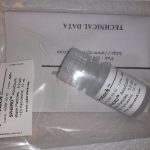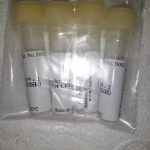Cadmium (Cd) is an industrial contaminant that poses extreme threats to human and animal well being. Vitexin (VIT) is a polyphenolic flavonoid of attribute pharmacological properties. We explored the healing function of vitexin on Cd-induced mitochondrial-dysfunction in rat renal tissues. Twenty-four rats have been equally divided into 4 teams and designated as management, Cd, Cd + vitexin and vitexin handled teams. The outcomes confirmed that Cd publicity elevated urea and creatinine ranges whereas decreased creatinine clearance.
Cd lowered the actions of antioxidant enzymes, i.e., catalase (CAT), superoxide dismutase (SOD), glutathione peroxidase (GPx) and glutathione content material within the Cd uncovered group. Cd publicity considerably (p < 0.05) elevated the reactive oxygen species (ROS) and Thiobarbituric acid reactive substances (TBARS) ranges in rat kidney. Cd additionally brought about a big (p < 0.05) discount within the mitochondrial TCA-cycle enzymes, together with isocitrate dehydrogenase, succinate dehydrogenase, alpha-ketoglutarate dehydrogenase, and malate-dehydrogenase actions. Apart from, mitochondrial respiratory chain enzymes, together with NADH-dehydrogenase, coenzyme Q-cytochrome reductase, succinic-coenzyme Q, and cytochrome c-oxidase actions have been additionally decreased below Cd publicity. Cd publicity additionally broken the mitochondrial membrane potential (MMP). Nonetheless, VIT therapy probably lowered the detrimental results of Cd within the kidney of rats. In conclusion, our research indicated that the VIT may attenuate the Cd-induced renal toxicity in rats.
Thermostability Engineering of a Class II Pyruvate Aldolase from Escherichia coli by in Vivo Folding Interference
The usage of enzymes in industrial processes is usually restricted by the unavailability of biocatalysts with extended stability. Thermostable enzymes enable elevated course of temperature and thus greater substrate and product solubility, reuse of costly biocatalysts, resistance in opposition to natural solvents, and higher “evolvability” of enzymes. On this work, we’ve used an activity-independent methodology for the collection of thermostable variants of any protein in Thermus thermophilus by folding interference at excessive temperature of a thermostable antibiotic reporter protein on the C-terminus of a fusion protein. To generate a monomeric folding reporter, we’ve elevated the thermostability of the reasonably thermostable Hph5 variant of the hygromycin B phosphotransferase from Escherichia coli to satisfy the tactic necessities.
The ultimate Hph17 variant confirmed 1.5 °C greater melting temperature (T m) and 3-fold longer half-life at 65 °C in comparison with parental Hph5, with no modifications within the steady-state kinetic parameters. Moreover, we reveal the validity of the reporter by stabilizing the 2-keto-3-deoxy-l-rhamnonate aldolase from E. coli (YfaU). Essentially the most thermostable multiple-mutated variants thus obtained, YfaU99 and YfaU103, confirmed will increase of two and a couple of.9 °C in Tm in comparison with the wild-type enzyme however severely decrease retro-aldol actions (150- and 120-fold, respectively). After segregation of the mutations, probably the most thermostable single variant, Q107R, confirmed a T m 8.9 °C greater, a 16-fold enchancment in half-life at 60 °C and better operational stability than the wild-type, with out substantial modification of the kinetic parameters.
Molecular mechanisms of inhibiting glucosyltransferases for biofilm formation in Streptococcus mutans
Glucosyltransferases (Gtfs) play essential roles within the etiology and pathogenesis of Streptococcus mutans (S. mutans)- mediated dental caries together with early childhood caries. Gtfs improve the biofilm formation and promotes colonization of cariogenic micro organism by producing biofilm extracellular polysaccharides (EPSs), the important thing virulence property within the cariogenic course of. Subsequently, Gtfs have turn into an interesting goal for efficient therapeutic interventions that inhibit cariogenic biofilms.
Importantly, focusing on Gtfs selectively impairs the S. mutans virulence with out affecting S. mutans existence or the existence of different species within the oral cavity. Over the previous decade, quite a few Gtfs inhibitory molecules have been recognized, primarily together with pure and artificial compounds and their derivatives, antibodies, and metallic ions.
These therapeutic brokers exert their inhibitory function in inhibiting the expression gtf genes and the actions and secretion of Gtfs enzymes with a variety of sensitivity and effectiveness. Understanding molecular mechanisms of inhibiting Gtfs will contribute to instructing drug mixture methods, which is simpler for inhibiting Gtfs than one drug or class of medication. This evaluate highlights our present understanding of Gtfs actions and their potential utility, and discusses challenges and alternatives for future exploration of Gtfs as a therapeutic goal.
Endogenous indole-3-acetic acid and nitric oxide are required for calcium-mediated alleviation of copper oxide nanoparticles toxicity in wheat seedlings
The motion of nanoparticles is more and more being studied lately to reduce their poisonous impacts. Apart from this, efforts are additionally being made to reduce their toxicity in crop crops through the use of numerous chemical compounds, i.e. vitamins, donors of signalling molecules, plant hormones, and many others.
Nonetheless, related alleviatory mechanisms are nonetheless not well-known. Subsequently, within the current research, we’ve investigated the toxicity of CuONPs and its mitigation by exogenously utilized calcium (Ca). The main focus was on whether or not indole-3-acetic acid (IAA) or endogenous nitric oxide (NO) has any function in carrying out this job. CuONPs declined wheat progress as a consequence of elevated accumulation of Cu and oxidative stress markers similar to superoxide radicals, hydrogen peroxide and lipid peroxidation (malondialdehyde) and it was additionally accompanied by a decline in endogenous NO. CuONPs additionally altered the redox standing of ascorbate and glutathione by inhibiting the exercise of their regenerating enzymes.
This collectively results in cell demise in wheat seedlings. Nonetheless, exogenous supplementation of Ca mitigated poisonous results of CuONPs by lowering the surplus accumulation of Cu, which brought about exceptional enhancement in progress, protein contents, photosynthetic pigments, and endogenous nitric oxide; altogether defending wheat roots from cell demise.
Curiously, addition of two,3,5-triiodobenzoic acid (TIBA) additional elevated CuONPs toxicity even within the presence of Ca, however the addition of IAA rescued this impact of TIBA. These outcomes clearly present that Ca mitigates CuONPs toxicity in wheat seedlings by involving IAA. Additional, the outcomes additionally confirmed that endogenous NO has a optimistic and indispensable function in Ca-mediated mitigation of CuONPs toxicity in wheat seedlings. This text is protected by copyright. All rights reserved.
Poly(ADP-Ribose) Polymerase-1 Inhibitors Drug Discovery, Design, and Growth as Anticancer Brokers from Previous to Current: A Mini-Overview
Most cancers remedies are identified for his or her life-threatening toxicities attributed to their low selectivity; therefore, new therapeutic approaches are being developed as alternate options. Amongst these approaches is the DNA restore mechanism, the place its inhibition outcomes selectively within the demise of cancerous cells. Poly(ADP-Ribose) Polymerase (PARP) is likely one of the enzymes concerned within the restore of broken DNA. The inhibition of PARP reveals to be a promising strategy for efficient focused therapy of most cancers, particularly in tumours with pre-existing Homologous-Restore (HR) defects (i.e., BRCA).
Nicotinamide, which is likely one of the PARP catalytic merchandise, was the primary recognized PARP inhibitor (PARPi). The primary FDA-approved PARPi was Olaparib in 2014 for the therapy of BRCA mutated superior ovarian most cancers. A number of scientific trials have been performed to additional enhance PARPi. Nonetheless, there are some issues associated to drug resistance, PARPi sensitive-tumour identification, and poisonous accumulation of PARPi. This report will evaluate the makes use of of PARPi, drug design and improvement of PARPi from previous to current, present points, and potential plans.





